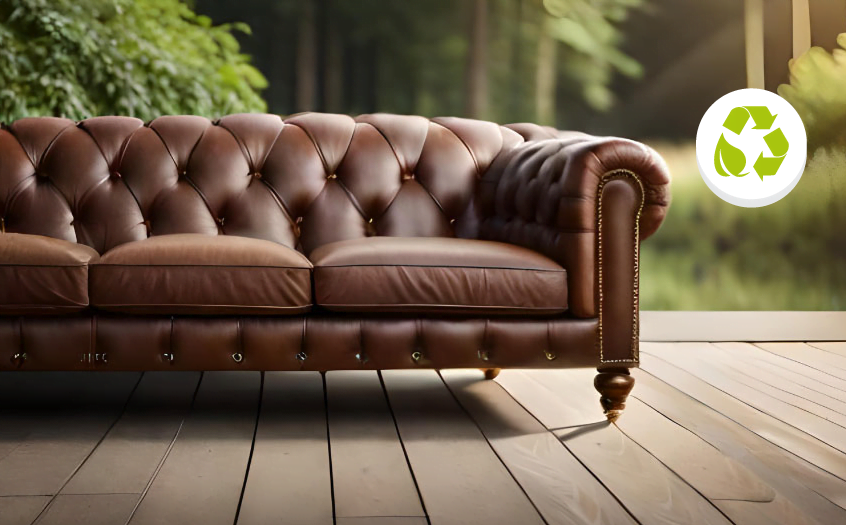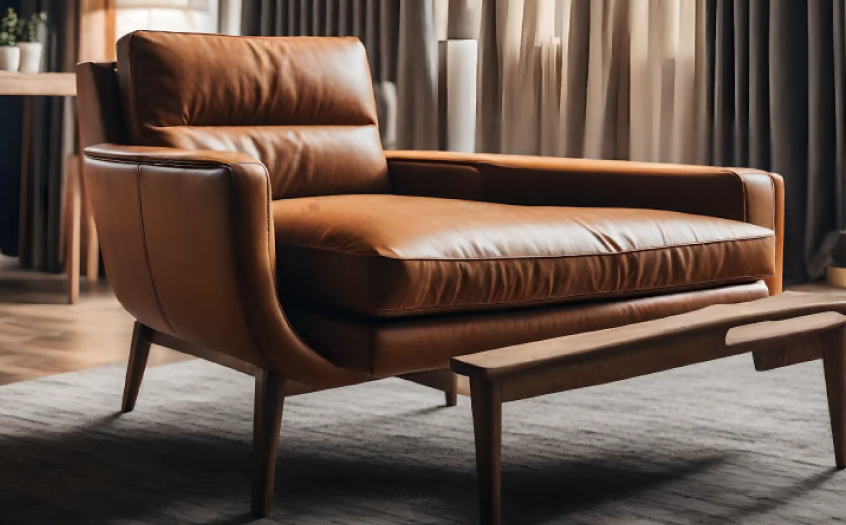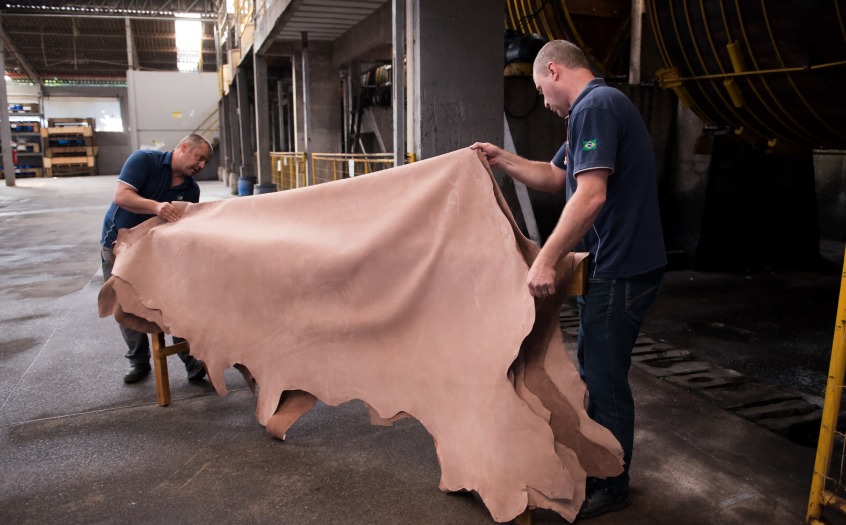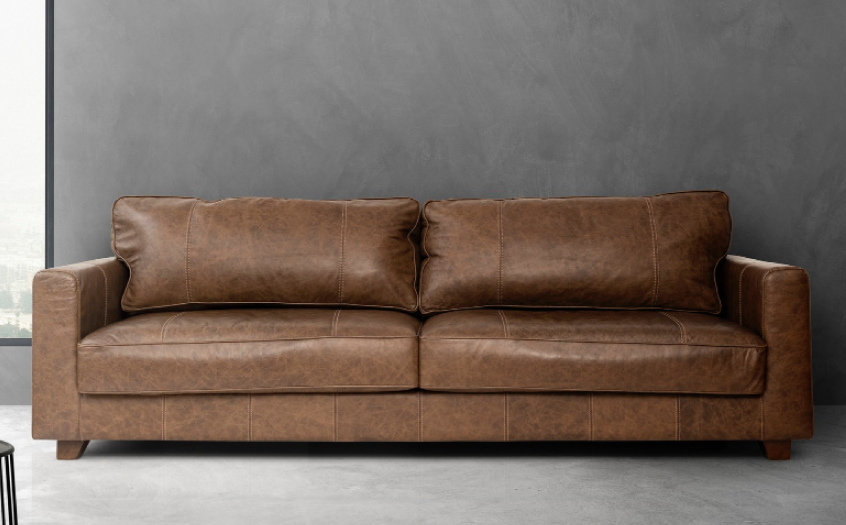Natural or Faux Leather for Furniture: Durability, Comfort and the Environment in Question
Natural leather or faux leather for furniture? This question necessarily arises when it comes to durability, comfort and the environment.
"There is a lot of misunderstanding about leather these days. It's time to celebrate its rich heritage and remember its characteristics of sustainability and circularity that so satisfy our yearning for a better, healthier planet." Bill Amberg English artist who works with leather.
Starting from this rich heritage of leather, as Bill Amberg reminds us, let's reflect on natural or faux leather for furniture.
Without a doubt, leather is a practically timeless material. From ancient cultures to the bold catwalks of contemporary fashion, it has been present.
It's no different with the interior of homes - the palaces of the old nobility or the bold houses designed by modern architecture. Let's not forget the buildings of governments or international organizations.
But leather was also present in less opulent homes, such as the houses of the old drovers, for example.
This more than brief history of leather for the interior of homes or seats of government brings us back to the question: natural leather or faux leather for furniture?
In other words, we are talking about a material that is culturally and historically produced from another human activity - cattle breeding - through natural preparation and tanning techniques.
Hence the sustainability and circularity mentioned by Bill Amberg. These are modern terms for actions that humanity has carried out for thousands of years, to which we can add durability, comfort, beauty, nobility, as well as being suitable for continuing to be reused, or recycled, a term that is also very current.
Natural leather or faux leather for furniture: true or false?

After all, why exactly are we wondering which is better - natural leather or faux leather for furniture? What led mankind to prefer fake, imitation leather for everything, not just furniture?
Of course, answering these questions is beyond the scope of this article. However, we can continue to ask ourselves about furniture.
First of all, let's look at the two sides - natural leather and faux leather:
NATURAL LEATHER
-
- Renewable natural resource;
-
- Durable;
-
- Repairable;
-
- Biodegradable;
-
- It significantly reduces landfill waste from meat production and thus protects the environment;
-
- Comfortable due to its flexibility and natural elasticity;
-
- It is part of a circular chain, involving various activities and people.
FAUX LEATHER
-
- Non-renewable resource, generally of petrochemical origin;
-
- Not durable;
-
- Harmful to the environment;
-
- It takes hundreds of years to decompose in nature, releasing harmful microplastics and toxic chemicals;
-
- It produces toxins when incinerated, causing a negative impact on the environment;
-
- It is not part of a circular economy because it is difficult to recycle.
In this context, what does furniture made from natural leather and faux leather look like?
On the one hand, we have durable furniture, which lasts for years and years, is easy to maintain, valuable, beautiful and noble.
On the other hand, we have furniture that is not very durable. It looks beautiful, but it is not very noble or valuable. The upholstery will need to be replaced before the end of its useful life.
In addition, leather is naturally flexible, making it comfortable and very natural in contact with the body - it absorbs sweat on hot days, while acting as a heating element on cold days. Imitation leather has none of these characteristics.
Passing fashions, lack of concern for the environment and the future of the planet and humanity itself, misunderstandings about the origin of natural leather are all reasons to reflect when answering the question: natural leather or faux leather for furniture?
Every person, every consumer should be aware that every human action has an impact on nature. Buying a sofa for your home does have a direct influence on the planet and the survival of human beings themselves, because durability, comfort and the environment must always be present.
Natural or faux leather for furniture: attention to detail!

At this point, it's important to pay attention to detail, as many consumers pay for real leather when in fact they are taking home furniture made from faux leather.
To illustrate, let's look at just a few types of faux leather used in furniture making:
Bicast leather - a split leather associated with a synthetic layer; it has a layer of leather and another of polyethylene or polyurethane that gives it a natural appearance.
Synthetic leather - made from PVC or PU, it is known in Brazil as Korino, Korano, Kourissimo, Courvin and in Europe as Ecopelle, Eco Leather, Vegan Leather, Pleather, Leatherette, Majilite, PVC Leather, PU Leather and even Genuine Leather.
What is the conscious consumer's attitude towards the possibility of imitation furniture?
First of all, you really need to be aware of the scope of the definition between natural leather and faux leather in furniture.
From there, it's important to check the labels. These, which are often confusing, end up misleading the consumer.
Conscious consumers ask questions, do research and demand real leather.
According to the website Is it leather? the recommendation is: don't hand over your credit card if you find any designation such as those mentioned above or other than "natural leather".
This makes it easier to decide between natural leather or faux leather for furniture.
Growing demand for sustainable furniture in Europe and Asia
More than a fad, the trend towards sustainability and ecology in all sectors corresponds to a real desire - especially among the younger sections of the world's population - to preserve the planet and the lives of all species, not just humans.
The article Europe Furniture Market Report 2023-2028: Share, Outlook, Size, Trends, Forecast provides detailed information on the European furniture market.
Furniture, by its very nature, aims at both the comfort and aesthetics of environments, serving different purposes and needs. However, leather upholstery continues to be sought after because it exudes luxury and durability.
Traditionally, the European public seeks excellence and values well-designed and elegant furniture, but innovation and new trends are also among their preferences.
However, modern European consumers are becoming increasingly aware of the environmental impact of their purchases.
According to the aforementioned article, there is a growing demand for eco-friendly, ethically produced furniture.
In this way, manufacturers who meet this demand will gain a competitive advantage.
New from Asia
The article Furniture - Asia, on the other hand, not only points to a growth projection for the furniture market in that region, but also brings up a surprising fact - the arrival of millenials at the age of buying their first homes.
In other words, companies in the sector are paying attention to the behavior and purchasing preferences of this generation, among which the search for innovative and ecological products stands out.
In this context, it is expected that, in the long term, the Asian furniture market will continue to grow and be very promising for manufacturers and wholesalers who are able to adapt to changes in consumer behavior, especially with the potential growth of the millennial population.
It is therefore assumed that the question of natural or faux leather for furniture will be increasingly present among young European and Asian consumers who are aware of their responsibilities towards the environment.
Durli Leathers and the contribution to the furniture industry

Unquestionably, Durli Leathers, in its more than 60 years of existence, has kept pace with the evolution of the furniture industry, supplying diversified leathers of the highest quality.
Its whole wet blue leathers with high quality grades and specifications, whole or half split wet blue and semi-finished leathers from the most diverse raw material origins, such as Brazil, Argentina, Paraguay, Uruguay and the United States, with standardized dyeing for homogeneity of color and which meet the most specific criteria and application needs, from refined to economical.
Durli Leathers has the structure to meet large demands, keeping the standard and quality of its products stable, respecting the schedules and sizes defined. Its leathers are consistent for subsequent processes with good yields.
Responsible sourcing of raw materials
Because of its commitment to protecting the environment, Durli ensures that the raw materials it receives are sourced responsibly.
To this end, it is applying a pioneering system of individual traceability, combined with satellite geomonitoring.
Finally, its products meet the demanding criteria of quality, sustainability and complete traceability, with international certifications such as LWG and Iso 9001.
Finally, when durability, comfort and the environment are at stake, Durli Leathers contributes to the conscious choice of high-quality natural leather produced in compliance with ESG criteria.
Sources and references used:
1 - https://isitleather.com/industries/furniture/
2 - https://www.one4leather.com/article/Leather-the-ultimate-upcycled-material
4 - https://isitleather.com/blog/sustainability-leather-tanning-industry-progress-potential/ 5 5 -

